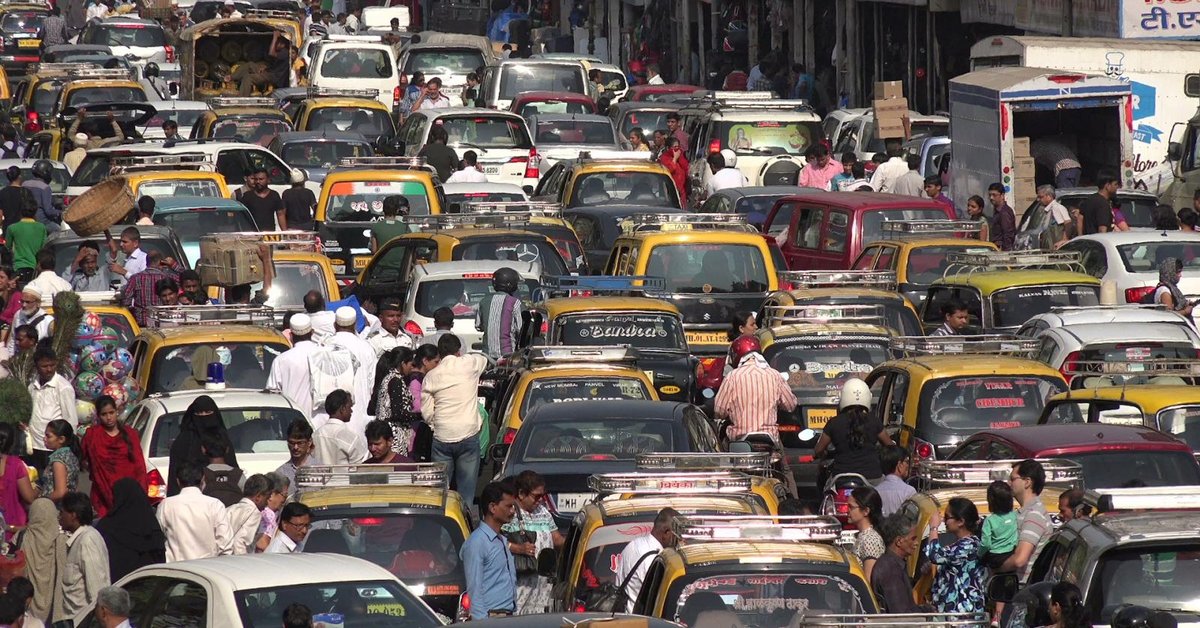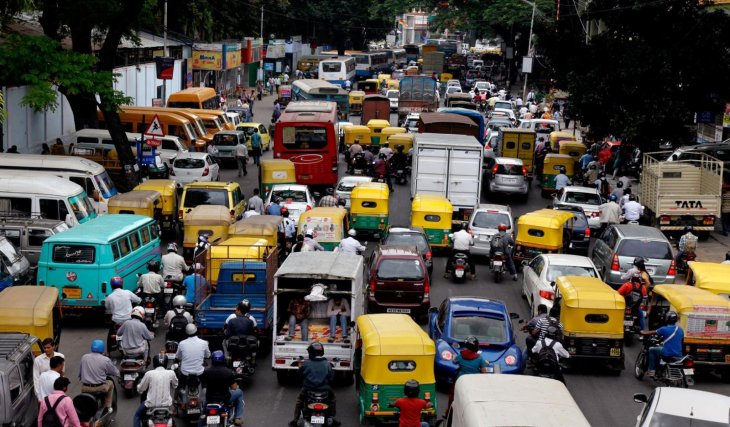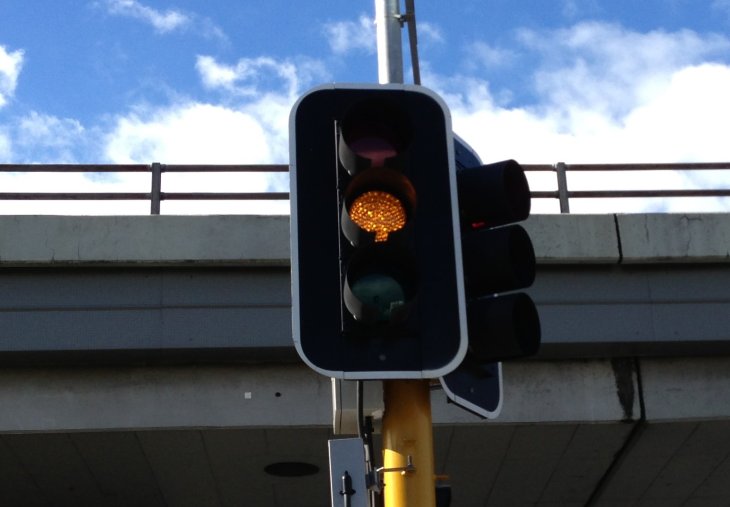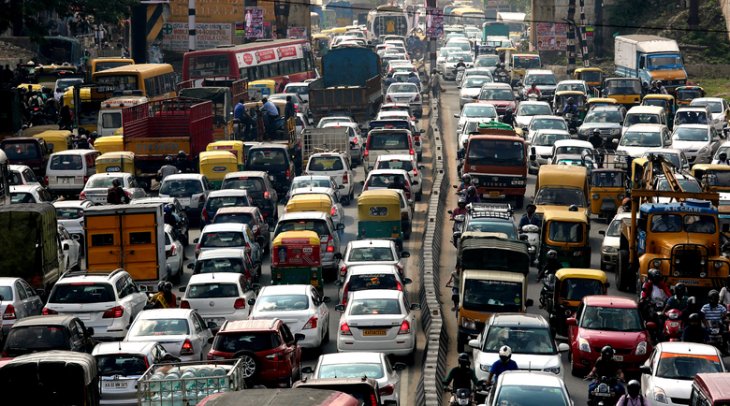Mathematics Might Hold The Key To Solve Traffic Congestion In India
Aadhya Khatri - Dec 18, 2019

Mathematics may not be the first thing coming to your mind when you get stuck in the traffic, but it has the power to solve this issue once and for all
- A Math Formula Tells Us How Long Everything Will Live
- Delhi Is The World’s Most Polluted Capital City For Three Years In A Row
- Indian Farmers Install High-Tech, Night-Vision CCTV Cameras To Protect Themselves
Big cities in India are losing around $22 billion each year to traffic jams, with most of the burden resting on the shoulders of the commuters. Citizens of Kolkata, Mumbai, Bengaluru, and Delhi have to spend an extra 1.5 hours on the road due to congestion than their counterparts in other Asian countries.
We know that math is fun but it is not the first thing coming to your mind when you get stuck in the traffic, but it has the power to solve this pressing issue once and for all. Mathematics holds the answer on why congestion develops and what we can do to avoid it.
So far, the Braess’s paradox is arguably the most surprising and well-known math results explaining the way traffic flows in a network. What it suggests is that in a network of roads, no matter how counter-intuitive this may sound like, building new roads actually makes the situation worse, even without the number of vehicles increasing.
The problem with traffic is the way vehicles on the road is distributed is heavily determined by the decision of individual driver, who works to lower their own commuting time, rather than moving as a group to reduce traffic congestion. This kind of behavior can be found everywhere in India as well as many nations in the world.

As math suggests, closing a few roads can actually improve the situation. To explain this seemingly wild result, scientists have used very challenging yet interesting mathematics to find a way to move a large number of people around a modern city.
Math holds the answer to how we should time buses and other public transport to reduce not only traffic jam but also the travel time of the users. It can also tell us how we should operate traffic lights to ease the impact of congestion, as well as whether we should build more roads and where to do so.
Mathematics Is The Answer
As the number of urban citizens in India is on the rise, how to accommodate that many people without creating severe jam on the city’s roads is a real challenge for policy-makers. The good news is, math has given us some viable solutions.
A prime example of how powerful math can be in solving traffic jam can be found in Melbourne, Australia. The traffic lights located at the entrance of the M1 freeway is controlled by math, and the result is promising. Since this new measure was applied, the overall speed of vehicles has been increased by 25% during rush hours without the time and the cost of building more lanes. This results are too good to ignore. So if you think math riddles and problems are all you have to care about. you might want to recalibrate your expectations.

However, frequent commuters would know that the real challenge still lies ahead. Take Melbourne as an example again. Its rush hours is from 6.30 to 9.30. It is estimated that the cost Victoria has to pay as a result of road traffic congestion will increase two fold by the year 2020. That economic cost is just the tip of the ice berg. We have not mentioned its impact on people’s quality of life and the environment.
A New Field: Jamology
Researchers around the world is working on this issue. One of them is Katsuhiro Nishinari at the University of Tokyo. He is a pioneer in using theoretical physics to understand how traffic flows. He is also the one who invented the word jamology.
One of his latest works covers how the self-driven particles flow. Each of these particles is an agent determining its own behavior. Theoretical physics has its own field that looks into how these self-driven particles behave in a large flock. The results have several applications, from understanding the behavior of ants to drivers.
Science has found multiple similarities between congestion formed in an insect colony and a group of commuters. The term experts use in physics is phrase transition. An example of that is the phrases water went through when it is boiled.
Dive Into A Carpool
The theories might sound too abstract to a typical person but they have an immediate practical application, which has the potential to change the traffic situation for the better. Technology has also aided with its increasing ability to collect real-time data on the traffic situation. It has also boosted the amount of data we can process in a certain amount of time.

The needed math algorithms and models have also been undergone some crucial developments, enabling faster data harnessing and processing.
The idea of real-time ride-sharing is gaining momentum in the last few years. It is expected to be the novel solution to solve traffic congestions.
Some smartphones’ apps can make use of optimization algorithms with some neat math tricks to accurately math vehicles with the passengers. The University of Melbourne is working on this idea to develop a ride-sharing platform that works in real-time. The scientists behind this project are Stephan and his collaborators.
This idea has resulted in the forming of Uber and companies like it. Experts said that what they have in mind can be used on public transports like buses as well as private cars. Basically, what they do is to ensure that whenever you need one, there will always be a bus there for you.
These adaptive schemes for buses are being developed by Mark Wallace and his team at Monash University, with the use of scheduling algorithms.
Buses are just the beginning though, their larger scheme is to cover all kinds of vehicles. All drivers need to do is to tell the system when they plan to start their journey and the algorithms will work to balance out road use to help avoiding congestion.
According to the results of simulations, even when a small number of commuters make use of the app, the commuting time can be decreased by half. So let’s put our hope up that India will soon have one of these systems so that we do not have to rely on our horns to get ahead.
Math is fun and useful, so you might want to put more thoughts on it.
Featured Stories

Features - Jul 01, 2025
What Are The Fastest Passenger Vehicles Ever Created?

Features - Jun 25, 2025
Japan Hydrogen Breakthrough: Scientists Crack the Clean Energy Code with...

ICT News - Jun 25, 2025
AI Intimidation Tactics: CEOs Turn Flawed Technology Into Employee Fear Machine

Review - Jun 25, 2025
Windows 11 Problems: Is Microsoft's "Best" OS Actually Getting Worse?

Features - Jun 22, 2025
Telegram Founder Pavel Durov Plans to Split $14 Billion Fortune Among 106 Children

ICT News - Jun 22, 2025
Neuralink Telepathy Chip Enables Quadriplegic Rob Greiner to Control Games with...

Features - Jun 21, 2025
This Over $100 Bottle Has Nothing But Fresh Air Inside

Features - Jun 18, 2025
Best Mobile VPN Apps for Gaming 2025: Complete Guide

Features - Jun 18, 2025
A Math Formula Tells Us How Long Everything Will Live

Features - Jun 16, 2025
Comments
Sort by Newest | Popular